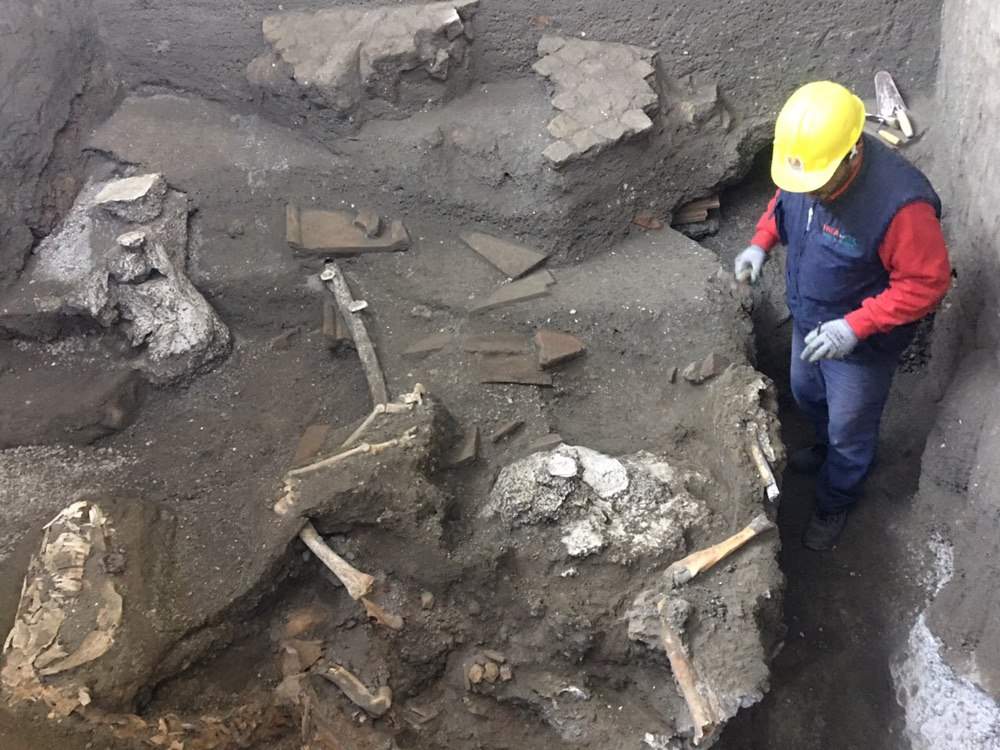The excavations at Pompeii continue to reveal surprises in anticipation. In the past few hours the discovery of a horse with rich military trappings, probably belonging to a high military magistrate, and harnessed in this way perhaps during the emergency of the eruption, was announced. The excavation operations that led to this important discovery had begun in the spring in the northern area outside the city walls. This is the same excavation that had led to the exceptional discovery of the remains of the intact horse found in May and those of an additional equine, also found in the same area.
The trappings are those that emerged during the excavation phases of the body. It consists, in particular, of five bronze items: on the ribs of the rib cage, which had been heavily reworked, four coniferous wood items covered with bronze foil of a semilunate shape were identified, while a fifth item, also made of bronze, was recovered under the belly, near the forelimbs, consisting of three hooks with rivets connected by a ring to a disc. The shape of these items and comparisons in the literature suggest that they belong to a particular type of saddle called a four-horned saddle, formed by a wooden frame covered with four horns, two in front and two in back, covered with bronze plates that served to give stability to the rider, at a time when stirrups had not been invented. Saddles of this type were used in the Roman world beginning in the first century AD and particularly in the military. There were four ring joints per harness and they were used to connect several leather straps to secure the saddle on the horse’s back. These are definitely military parade trappings.
Additional elements referable to the horse’s ornamenta are documented behind the back, where traces of plant fibers suggest the presence of a drape/mantle, and in the space between the hind and fore legs, where an additional cast suggests the presence of a pouch. It is also likely that some of the missing harness was stolen by grave robbers. “The three horses, like perhaps the first one found and analyzed,” pointed out Pompeii’s director general, Massimo Osanna, “must have been part of the ’noblest breed,’ animals of representation, because of their imposing size, probably the result of careful selections, and because of their fine harnesses, made of iron and bronze. These exceptional findings confirm that this was a prestigious estate, with richly frescoed and furnished rooms, sumptuous sloping terraces overlooking the Gulf of Naples and Capri, as well as an efficient service district, with a threshing floor, warehouses for oil and wine, and extensive densely cultivated land, even according to early twentieth-century surveys. In 2019, two million euros will be allocated from the ordinary funds of the Archaeological Park to proceed with the expropriation of the land and to continue the excavation investigations, after which the opening to the public will be possible.”
The study of the saddle is by archaeologist Domenico Camardo, while the field research is being overseen by archaeologist Paola Serenella Scala.
 |
| More important discoveries in Pompeii, horse found with rare military trappings |
Warning: the translation into English of the original Italian article was created using automatic tools. We undertake to review all articles, but we do not guarantee the total absence of inaccuracies in the translation due to the program. You can find the original by clicking on the ITA button. If you find any mistake,please contact us.